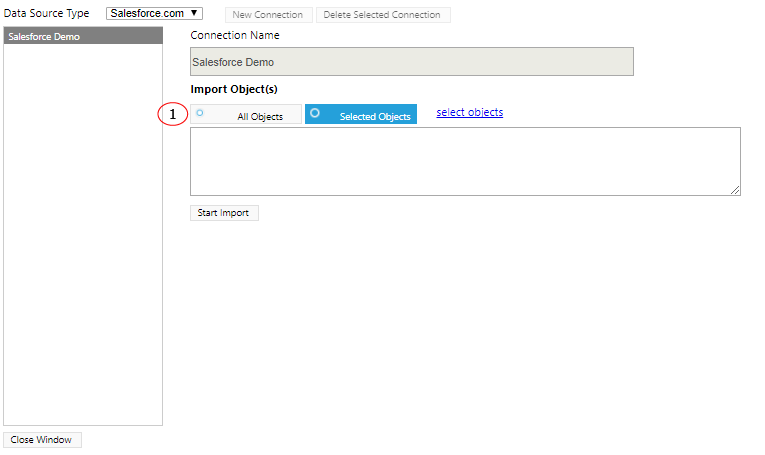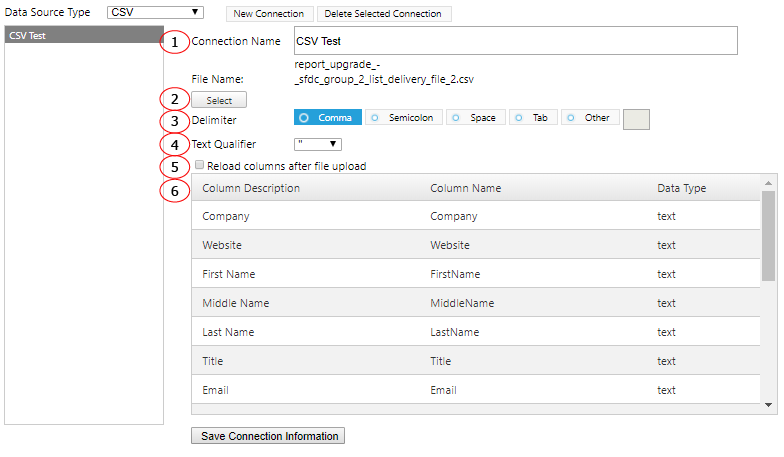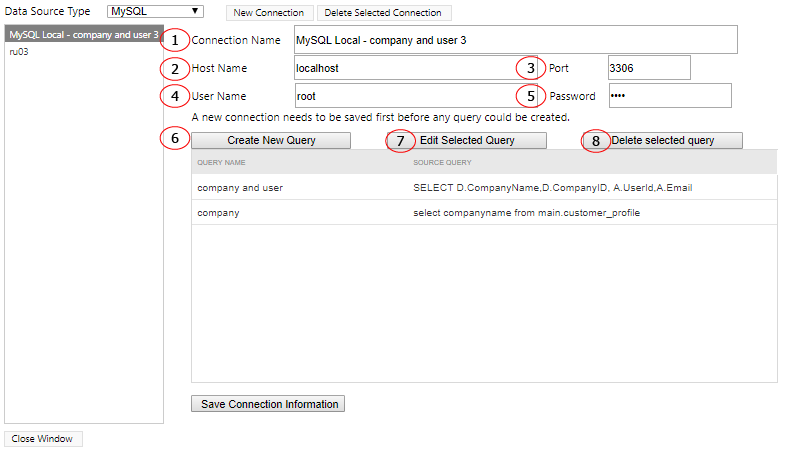|
<< Click to Display Table of Contents >> Data Source Management |
  
|
|
<< Click to Display Table of Contents >> Data Source Management |
  
|
The Source Connection Management is where you manage your source data connections, including Salesforce and external data connections.
Manage Your Connections
To manage your data source connections, go to the menu bar on the left side and select Manage Source Connections.

Types of Connections
Salesforce
This is the main Salesforce organization that Report Upgrade is installed. Currently, only a single Salesforce connection is supported. Query across multiple Salesforce organizations is not supported.

1. All objects and fields descriptions are imported initially during the initial setup process. After that, to reflect the change on an object or field, you need to import the object definitions. Select to import all objects again or select the only object(s) needed. Click on Start Import button to import the object definitions.
CSV (flat file)
CSV is referring to the common file type for data sharing. The actual data connection supports different delimiter and not limited to commas only.

1. Gives the connection a descriptive name.
2. Select a file to upload to Report Upgrade server.
3. Select a delimiter of the file. If it's not displayed on any of the buttons, select the "Other" button and manually input the information to the text box on the right.
4. Select the text qualifier of the file.
5. Checks the Reload columns after a file upload, check the box if you want to update the file definition. Used for column change situation.
6. Columns included in the uploaded file. After the file is uploaded, change the data type to reflect the actual data type of each field.
MySQL
The MySQL connection works with database query only. You can create different queries within one connection. A good practice is to create a query which contains the fields and level of data you need. A general query joining too many tables could have a big performance impact when the dashboard or report runs.

1. Give the connection a descriptive name.
2. Database server host name.
3. Database server port number.
4. Database server login user name.
5. Database server login user password.
6. Create a new query.
7. Edit an existing query.
8. Delete an existing query.